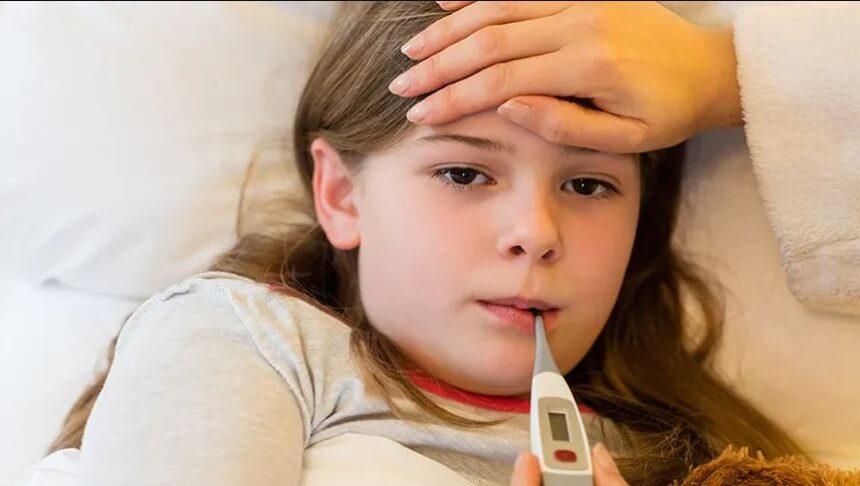Hyperthermia is a condition that occurs when the body temperature rises above the normal range, typically due to external environmental factors. Unlike a fever, which is the body’s response to an infection, hyperthermia is caused by the body’s inability to cool itself effectively. This condition can be dangerous if not treated properly, especially during extreme heat conditions.
In this article, we will explore the causes, symptoms, and treatment of hyperthermia, offering valuable insights to help you understand and prevent this potentially life-threatening condition.
What is Hyperthermia?
Hyperthermia refers to the body’s inability to maintain its normal temperature due to excessive heat exposure. The normal body temperature is around 98.6°F (37°C), but in cases of hyperthermia, the core temperature may rise significantly above this. Prolonged exposure to high temperatures can lead to serious health risks, including heat exhaustion and heatstroke.
Key Factors Leading to Hyperthermia
- High Environmental Temperatures: Exposure to high outdoor temperatures, especially in summer, is one of the primary causes.
- Strenuous Physical Activity: Engaging in intense physical exercise or work in hot conditions without proper hydration can elevate the risk.
- Dehydration: Lack of sufficient water intake reduces the body’s ability to sweat, hindering the natural cooling process.
- Clothing: Wearing tight or non-breathable clothing that prevents proper heat dissipation can also cause the body temperature to rise.
- Age and Health Conditions: Older adults, infants, and individuals with certain medical conditions may be more prone to hyperthermia.
Common Symptoms of Hyperthermia
Recognizing the symptoms early can prevent the condition from worsening. The common symptoms of hyperthermia include:
- Excessive Sweating: As the body tries to cool down, there is an increased amount of sweating.
- Rapid Heartbeat: The heart rate may increase as the body works harder to regulate temperature.
- Dizziness or Confusion: A feeling of lightheadedness or confusion may occur as body temperature rises.
- Fatigue: Overheating can cause extreme tiredness and lack of energy.
- Nausea and Vomiting: Some individuals may experience nausea or vomiting as a result of hyperthermia.
- Headache: Heat-induced headaches are common as the body struggles to maintain a normal temperature.
If not treated promptly, hyperthermia can progress to heatstroke, a serious medical emergency that can result in organ damage or death.
Types of Hyperthermia
There are several stages of hyperthermia, ranging from mild to severe:
| Type | Description |
|---|---|
| Heat Cramps | Painful muscle contractions often caused by excessive sweating and loss of salts. |
| Heat Exhaustion | A condition marked by heavy sweating, rapid pulse, and a feeling of faintness or weakness. |
| Heatstroke | The most severe form, where body temperature exceeds 104°F (40°C), potentially leading to unconsciousness or death. |
Treatment for Hyperthermia
Immediate action is required to lower the body temperature and prevent complications. Below are effective ways to treat hyperthermia:
1. Move to a Cooler Environment
The first step is to move the affected person to a cool or shaded area. If indoors, turn on air conditioning or a fan to promote airflow and reduce heat.
2. Hydration
Drinking water is essential to rehydrate the body and help it cool down. Avoid caffeinated or alcoholic beverages as they can worsen dehydration.
3. Cooling Methods
Applying cool cloths to the skin, taking a cold shower, or using ice packs around the neck and armpits can help bring down the temperature. Do not use ice baths for severe cases as this can cause shock.
4. Loosen Clothing
Remove excess clothing or any tight apparel to allow the body to release heat more effectively.
5. Medical Intervention
If the individual shows signs of heatstroke (such as confusion, fainting, or unconsciousness), seek emergency medical attention immediately. Heatstroke requires professional medical treatment and can lead to severe complications without prompt care.
Preventing Hyperthermia
Prevention is key to avoiding hyperthermia, especially during hot weather or intense physical activities. Below are preventive measures to keep in mind:
- Stay Hydrated: Drink plenty of fluids, especially water, throughout the day, even if you do not feel thirsty.
- Wear Light Clothing: Choose breathable, loose-fitting, and light-colored clothing that allows heat to escape from the body.
- Avoid Peak Heat Hours: Try to stay indoors or in shaded areas during the hottest part of the day (typically between 10 a.m. and 4 p.m.).
- Take Breaks: If you’re working or exercising outdoors, take frequent breaks in the shade or in a cooler environment.
- Use Sunscreen: Protect your skin from sunburn, which can make it harder for the body to cool down.
Conclusion
Hyperthermia is a serious condition that can lead to life-threatening complications if not properly addressed. By understanding the causes, symptoms, and treatments of hyperthermia, you can take the necessary steps to protect yourself and others during extreme heat situations. Remember, prevention is the best defense against hyperthermia. Stay hydrated, wear appropriate clothing, and avoid prolonged exposure to high temperatures.
By following these guidelines, you can reduce the risk of hyperthermia and enjoy the summer safely.




